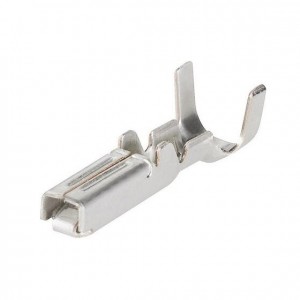The wiring harness for cars is an essential component that connects various electrical and electronic devices in a car. It is a system that consists of a set of wires, connector housings, terminals, wire seals , and cable protection that are bundled together. The automotive wire harness plays a crucial role in transmitting electrical power, signals, and data between different components in a car, including engine, transmission, lights, dashboard, and audio systems.
The automotive wire harness is designed to be durable, flexible, and reliable to withstand the harsh environments of a car, such as heat, vibration, moisture, and chemicals. It is usually made of high-quality materials, such as copper, aluminum, PVC, and nylon, that are resistant to corrosion, abrasion, and fatigue. The automotive wire harness is also engineered to meet the specific requirements of different car models, such as size, shape, color, and configuration.
The Connector Housings are an integral part of the automotive wire harness, as they enable the wires to be connected and disconnected easily and securely. The connectors come in various shapes, sizes, and types, depending on the application and function. Some of the common types of connectors used in the automotive wire harness include blade, butt, crimp, pin, socket, and splice connectors. The connectors are designed to be compatible with different wire gauges and insulation types, to ensure a proper fit and electrical continuity. The connector housing is usually made of plastic or metal, and it can be molded or stamped to fit the specific shape and size of the wires and connectors. The housing also serves as a barrier against moisture, dust, and other contaminants that can damage the wires and connectors. The housing can be designed with various features, such as locking tabs, latches, clips, and seals, to ensure a secure and reliable connection.
The Terminal is the point where the wire connects to the connector or housing. The terminal can be crimped, soldered, or inserted into the connector or housing, depending on the type and application. The terminal is designed to provide a secure and reliable electrical connection, and it can be made of various materials, such as copper, brass, and aluminum. The terminal can also be coated or plated with materials, such as tin, nickel, and gold, to enhance its conductivity and corrosion resistance.
The Wire Seal is another crucial component of the automotive wire harness, as it protects the wires and terminals from moisture, dust, and other contaminants. The wire seal can be made of rubber, silicone, or other materials that are resistant to heat, cold, and chemicals. The wire seal is usually installed between the wire and connector or housing, to create a tight and waterproof seal. The wire seal can also be designed with various shapes, sizes, and configurations, to fit the specific application and environment.
Cable Protection & Sleevings is also a crucial consideration when it comes to the automotive wire harness. Cable protection is the process of protecting the cables and wires from damage caused by abrasion, vibration, heat, and moisture. Cable protection can be achieved through the use of various materials such as braided sleeving, conduit, heat shrink tubing, and tape. Braided sleeving is a flexible and durable material that can be used to protect wires from abrasion and vibration. Conduit is a rigid material that can be used to protect wires from heat and moisture. Heat shrink tubing is a flexible material that can be used to protect wires from heat and abrasion. Tape is a flexible material that can be used to protect wires from moisture.
In conclusion, the wiring harness for cars is an essential component that connects various electrical and electronic devices in a car. It is a system that consists of a set of wires, connectors, housings, terminals, and wire seals that are bundled together. The automotive wire harness plays a crucial role in transmitting electrical power, signals, and data between different components in a car, and it is designed to be durable, flexible, and reliable to withstand the harsh environments of a car. The connectors, housing, terminal, and wire seal are all important components that contribute to the functionality and reliability of the automotive wire harness.
Post time: Jun-13-2023





